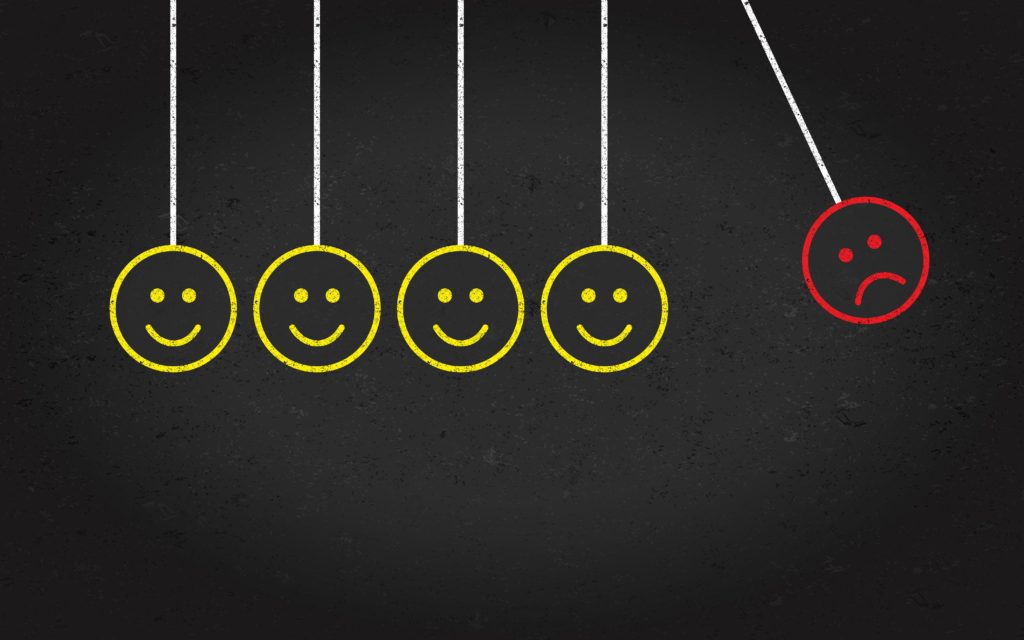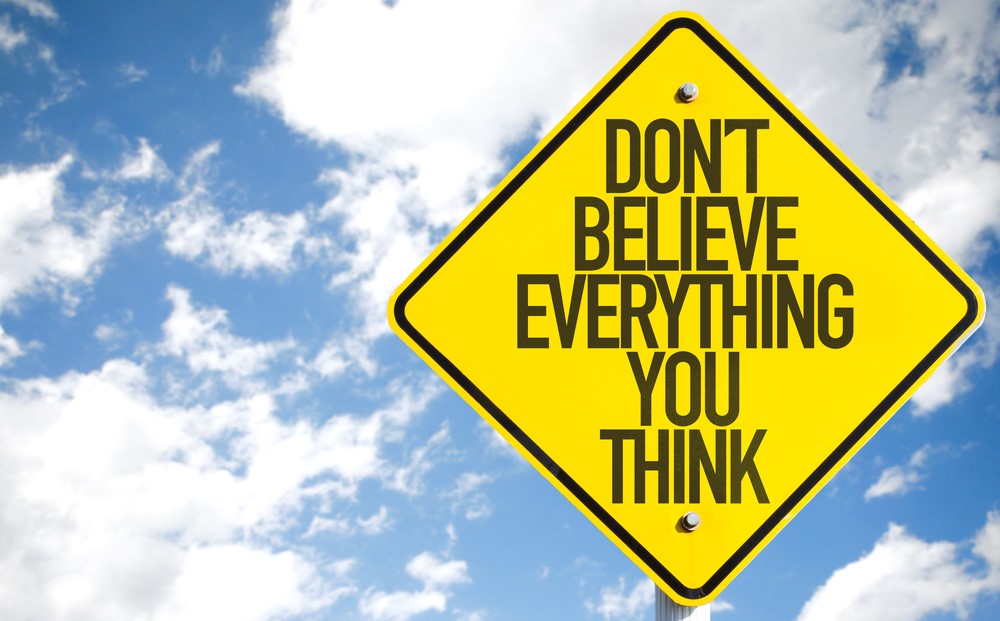
At Kapok, we often spend time talking about caregiver mental health, including approaches that can make you feel better and make your caregiving experience much easier. Previous topics have included meditation and mindfulness, self-compassion, identifying your needs, and journaling.
Today’s post is called The Happiness Trap review, as we’re taking a close look at a book called The Happiness Trap by Dr. Russ Harris (you can check it out for yourself here).
The book focuses on a simple idea – that it is our very search for happiness that is making us deeply discontented. We end up in a pattern of forever looking to do better and feel better, where we are so focused on whether we’re happy, that we almost lose the ability to enjoy our experiences as they are happening.
Why Talk About The Happiness Trap?
Before we dig into our The Happiness Trap review, let’s take a step back and talk about the general idea a little more. Like many books, The Happiness Trap has a self-help angle.
Specifically, the book focuses on changing your relationship to your thoughts and emotions.
The book does so through an approach called Acceptance and Commitment Therapy (ACT). ACT itself has roots in mindfulness and acceptance, but there is a change aspect too, so you’re not simply learning to accept every situation.
Why does this matter to caregivers?
Because, regardless of who you are or what you do, your experiences and struggles aren’t just related to your situation. Indeed, some people even manage to thrive in situations that would bring others to their knees. Finding the right mental tools can have a huge impact on your life, making the task of caregiving much less overwhelming.
The way The Happiness Trap balances acceptance and change is powerful as well. This is an area that’s often missed in discussions of mindfulness.
What I Learned From The Happiness Trap

I’ve been spending a lot of time recently looking at and thinking about the mind. That’s included digging into ideas of mindfulness, mindful self-compassion, Cognitive Behavioral Therapy, and a variety of other topics. Because of this, some aspects of The Happiness Trap were very familiar to me.
Some, however, were entirely new.
Rather than going through the whole book step-by-step, I’m going to highlight some of the key things that I learned. There are plenty of other gems in the book too, including ones that might stand out to you.
Life and Emotions Aren’t Perfect
The Happiness Starts off by talking about the fairy tales we have of life, including the idea that we’re meant to be happy and that not being happy is a sign of a problem.
He highlights the fact that humans go through a variety of emotions. These emotions aren’t always comforting and they mightn’t be what we’d like.
But, they don’t need to be a problem either.
In fact, the more time we spend trying to push our emotions and thoughts away, the bigger and scarier they become.
As part of trying to be happy, we often stick experiences into categories – good, bad, neutral, then respond to them differently depending on which category they fall into. The bad ones we often try to shove away, the good ones we may cling to and try to replicate, while the neutral ones often get ignored.
There are countless problems with that pattern – not least because the neutral moments make up huge chunks of our lives.
What if we could change this? Change the way that we approach and categorize responses? Many parts of The Happiness Trap aim to teach readers how to do just that.
You Don’t Need To Control Thoughts and Emotions
A second helpful area for me was early in the book, related to the idea that we often think we should be able to control our thoughts and emotions.
We do have some control, of course. We can replace negative thoughts with positive ones or even change our emotional state. But, Russ suggests that our ability to control our thoughts and emotions is much less than we often assume.
This reminds me of something that I read about recently, through a different approach called REBT. REBT is an alternative form of behavioral therapy, similar to CBT, but with some differences (the book How to Stubbornly Refuse to Make Yourself Miserable About Anything – Yes, Anything! is a good introduction to the topic).
The author of that book talks about the idea of secondary disturbance, where you are distressed about your distress – like being angry at yourself for being afraid or being anxious about being anxious. Recognizing that you don’t need to control your emotions is a powerful first step in decreasing secondary disturbances.
This is one reason why mindfulness techniques can often help with your emotional responses.
Is It Useful?
In The Happiness Trap, Russ Harris talks about taking a pragmatic approach to your thoughts. He suggests that rather than considering whether a thought is true or not, consider whether it is useful instead.
This might sound like a strange idea – like you’re avoiding reality.
But, that’s not it at all.
The focus is on not giving ideas weight when they’re not helpful.
For example, caring for someone with depression is objectively difficult. There’s no denying that. In that situation, you still need to be aware of the challenges, take care of yourself, and learn the best ways to provide support.
You don’t, however, see any benefit by ruminating on the idea that ‘this is difficult’ over and over again.
The ‘is it useful’ approach is particularly relevant for caregiving because so many of your painful thoughts and emotions are true. They’re also not useful.
Acceptance Doesn’t Mean No Change
As you may have already noticed in our The Happiness Trap review, the book itself focuses on the idea of acceptance. It’s even based on an approach called Acceptance and Commitment Therapy (ACT).
This focus on acceptance might imply no change. That you’re meant to simply accept things as they are, including your emotions and situations.
Yet, Russ Harris makes it clear that this isn’t the case at all.
As he describes it, acceptance acts as a place to put your feet, as firm ground for you to move forward from. You have to first understand and accept your situation for whatever it is, before you can work to change it.
There’s a logic to this. After all, when you’re fighting your thoughts and emotions, you don’t have the resources to make changes well.
For example, as a caregiver, you might get caught up in stories that your life shouldn’t be this way. That you’re giving up too much, that your life is on hold and that it isn’t fair. When you’re focused on thoughts like this, it’s difficult to see what can be changed and what should be changed.
With ACT, the goal is to first accept your thoughts and emotions as they are, then choose a valued direction, and finally take action.
I love how the book manages to balance mindfulness, acceptance, and change. It’s unusual to see that set of ideas combined. While mindfulness itself doesn’t preclude change, it’s easy for beginners to assume that acceptance means that nothing should change.
Build a Value-Driven Life
The final aspect of The Happiness Trap that caught my eye was the idea of using your values as a guide. Specifically, the book talks about defining your own values, rather than using a prescribed set of ideas and ideals.
I think this is a really important point, especially as a caregiver.
Some of the decisions you make may not seem wise to people on the outside, but this doesn’t mean that they’re bad decisions. The question, more than anything, is how do those decisions fit in with your own values? With who you are.
The Happiness Trap consistently talks about finding your own way with what’s written.
Problems With The Happiness Trap

Firstly, as with any book or technique, The Happiness Trap will be a good fit for some people and not for others. You might notice this if you flip through The Happiness Trap reviews on Amazon (most of them are positive, but there is a handful of scathing reviews too).
Can Be Simplistic
One reviewer mentioned that the book is simplistic (it is at times), condescending (a little, but not often), and annoyingly perky (odd description, but not entirely inaccurate). It certainly isn’t the in-depth approach that you’ll see with books like How Emotions Are Made (a personal favorite), Descartes’ Error, or anything by Anthony de Mello.
Then again, it isn’t trying to be either.
The Happiness Trap is best seen as an introduction. One that’s designed for people who haven’t spent a long time thinking about the mind and how it works.
Indeed, if this is a new idea for you, then simplistic is perfect.
I’ll admit, I did find the book too simplistic at times. Then again, I’ve been digging into this field for quite a while, so that’s not too surprising.
There’s Often Little Evidence
Throughout The Happiness Trap, Russ Harris makes many bold claims, most of which he doesn’t provide much evidence for.
For example, he talks about the fact that controlling our emotions isn’t possible, that it’s impossible to ‘turn off’ thoughts, and that control strategies are often a bad idea.
Those ideas make sense for the framework of the book, but they’re far from being proven facts. Indeed, there are plenty of people who focus on emotional mastery and control methods, seeing them as being positive rather than negative.
I personally take issue with the idea that you can’t ‘turn off’ your thoughts isn’t entirely true either. This is repeated throughout the book, but it isn’t true for everyone all the time.
Most people can’t or can’t literally turn off their thoughts for long, if at all. But, some people who have practiced meditation for a long time can and some people end up with a so-called quiet mind (often as the result of trauma or medication), where they literally don’t have spontaneous thoughts.
This is why it’s so important to follow your own instincts. Look for what works for you and stay curious.
The Approaches Don’t Work in All Situations
It’s also important to recognize that the approaches in The Happiness Trap don’t work for all situations and all people.
This much is a given. No technique works for everyone. Personally though, I don’t think Russ Harris makes this clear enough.
For example, one of the ideas that I love focuses on ‘is this useful?’, as a way of looking at whether to give thoughts any weight or allow them to pass through. Taking this approach really can be more powerful than thinking about whether thoughts are true or not.
But, in discussing this, Russ Harris often misses the fact that sometimes people need to closely examine their thoughts.
In particular, your thoughts and emotions are sometimes based on unhealthy or incorrect underlying stories, like a sense of helplessness, the idea that the world isn’t safe, or that you’re an awful person. You can be as mindful as you like about related thoughts and emotions, but they’ll keep coming back with a vengeance until you’ve addressed what underlies them.
My The Happiness Trap Review – Final Thoughts
I picked up The Happiness Trap based on the recommendation of another writer/researcher here at Kapok. She’s been finding it a useful tool and an interesting read – and I tend to agree.
Russ Harris’s writing style is part of the appeal. He writes well, keeping things interesting without getting lost too much in the jargon. This is fantastic for beginners.
My personal experience of the book is mixed.
That’s partly because I’ve spent so long thinking and writing about related topics, so much of what The Happiness Trap talks about isn’t new to me. Some of the ideas also contradict techniques that I use (such as shifting emotional states), while others simply don’t work for me.
I also have an interesting background, in that I’ve had to do extensive CBT and REBT work to address past trauma and related emotional over-reactions. Since I’ve done that work, approaches like mindfulness and ACT are useful. However, I know from experience that mindfulness-related techniques can be painful and even damaging when you have underlying trauma that needs working through first.
Even so, I’ve found plenty of gems in the book, including those that I talked about earlier on.
This is why I recommend The Happiness Trap to most readers (unless you have significant mental health problems, including depression, anxiety, or a history of trauma. If this is the case, please talk to a professional about the book first).
Even if you don’t agree with most of the ideas in The Happiness Trap, you’ll probably find at least a few interesting things that make you see life in a slightly different way.
Besides, honestly, sometimes it just takes the right insight at the right time to make a dramatic shift. So, even if The Happiness Trap doesn’t sound like the best fit for you, why not give it a go? If you do, please let us know how you get on.
Feeling Overwhelmed?
Check out our Caregiving Consulting service for personalized support and guidance.

Leave a Reply